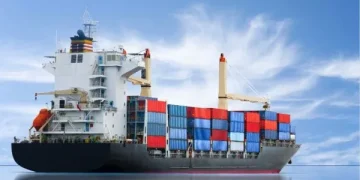By Eva Richardson – The Logistic News
Global shipping lines are ramping up the use of blank sailings across major trade lanes, a response to softening demand and cost volatility that is already disrupting cargo schedules and stressing supply chains.
From Asia to Europe, and across the Pacific, carriers are cancelling scheduled voyages at a pace not seen since early 2023. The goal: to stabilize freight rates and balance vessel utilization. The result: reduced reliability for shippers and increasing pressure on time-sensitive cargo.
An Industry Under Constraint
Blank sailings, the intentional cancellation of planned departures, are a known strategy in maritime logistics. But this season, their frequency has shifted from tactical to structural. Operators are withdrawing capacity week after week, citing port congestion, equipment imbalances, and fuel cost management.
According to port tracking data reviewed by The Logistic News, the number of cancelled sailings between Asia and North Europe in April jumped by 36% compared to the previous month. On the Transpacific route, carriers pulled 14 departures in a three-week window.
“We’re not just seeing occasional cuts,” said Tom Reese, a freight consultant based in Hamburg. “This is coordinated supply management, and it’s happening across alliances.”
Shippers Forced to Adapt on the Fly
For exporters and freight forwarders, the unpredictability is becoming a recurring risk. Booking cycles are lengthening, transit times are harder to guarantee, and rerouting is now a routine part of planning.
Manufacturers operating on just-in-time models are particularly exposed. A single missed sailing can delay production by days, sometimes more. Seasonal goods—especially apparel and consumer electronics—face a similar challenge, as even short delays can make the difference between profit and write-off.
“The reliability we had in 2022 is gone,” said Marion Bouchard, logistics manager at a French outdoor gear brand. “We’re booking earlier and paying more, just to avoid being left without space.”
Behind the Cuts: A Race to Maintain Rates
While cargo volumes have not collapsed, rates remain fragile. Spot prices on some lanes fell below operating cost earlier this year, prompting alliances to act before further erosion.
Rather than let vessels sail half empty, carriers are choosing to hold back tonnage. And with more megaships entering service in 2025, the tension between capacity and demand is likely to persist.
Blank sailings, once an occasional lever, are now embedded in scheduling logic.
Conclusion
What was once an exception is becoming a rule. For global supply chain managers, planning around blank sailings is no longer optional. It’s part of the cost of doing business in an industry that has traded frequency for flexibility.























